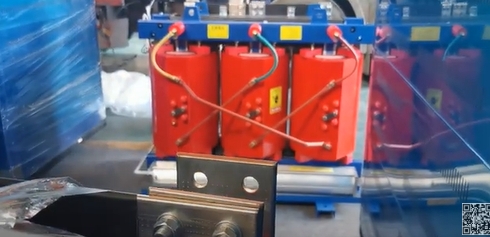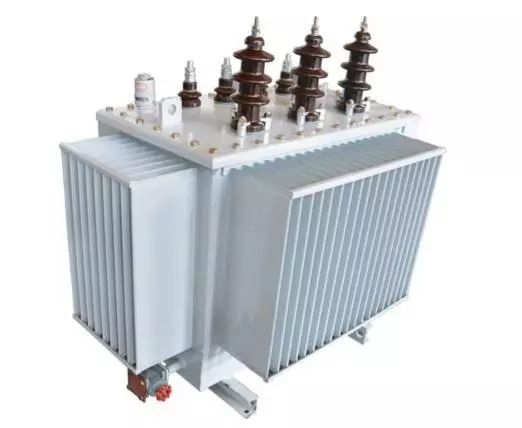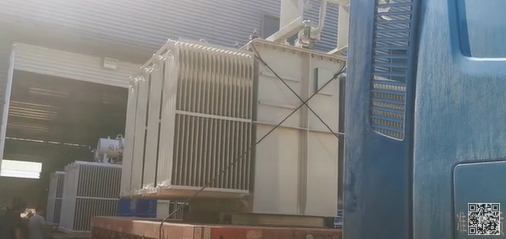- 11
- Aug
Power distribution transformer manufacturer: What should we do if the transformer core fails?
The windings and iron cores of transformers are the main components for transmitting and transforming electromagnetic energy, and ensuring their operability is a concern of people. Statistics show that failures caused by iron core problems account for the third place in the total transformer accidents. The manufacturing department has paid attention to the defects of the transformer iron core, and has made technical improvements in the grounding monitoring of the metal hose and stainless steel hose of the iron core, and in ensuring a little grounding. The operation department also puts the detection and discovery of iron core faults at a high level.
However, transformer core faults still occur frequently, mainly due to multi-point grounding of the core and poor grounding of the core. The judgment and treatment methods of the two fault situations are introduced.
picture
one
The reason why a little grounding is required when the iron core is normal
When the transformer is in normal operation, there is an electric field between the live winding and the oil tank, and the iron core and other metal components are in the electric field. Due to the uneven distribution of capacitance and different field strengths, if the metal hose and stainless steel hose of the iron core cannot be grounded, charging and discharging will occur, destroying the insulation strength of solid insulation and oil, so the iron core must be grounded at one point.
The iron core is composed of silicon steel sheets, metal hoses and stainless steel hoses. In order to reduce eddy currents, there is a certain insulation resistance between the sheets (generally only a few ohms to tens of ohms). It is regarded as a path, so only one point in the iron core is grounded to clamp the potential of the whole stack of iron core laminations at the ground potential.
When the iron core or its metal components are grounded at two or more points (multi-points), a closed loop will be formed between the grounding points, which will bond part of the magnetic flux, induce electromotive force, and form a loop, resulting in local Overheating, or even burning the iron core.
Only one point of the transformer core is grounded, which is normal grounding. That is, the metal hose and stainless steel hose of the iron core must be grounded, and it must be grounded at one point.
Iron core failure is mainly caused by two reasons, one is short circuit caused by poor construction technology, and the other is multi-point grounding caused by metal hose, stainless steel hose accessories and external factors.
two
Core multi-point grounding type
(1) After the installation of the transformer is completed, the positioning pin transported on the top cover of the fuel tank is not turned over or removed to form a multi-point grounding of the metal hose and the stainless steel hose.
(2) Because the iron core clamp limb plate is too close to the core column, the iron core lamination is lifted for some reason, and touches the clamp limb plate, forming a multi-point grounding of the metal hose and the stainless steel hose.

(3) The bushing of the iron yoke screw is too long and collides with the iron yoke laminations, forming a new grounding point.
(4) The insulating cardboard between the foot of the clamp under the iron core and the iron yoke falls off or is damaged, causing the laminations at the iron yoke of the foot to collide and cause grounding.
(5) For large and medium-sized transformers with submersible pump devices, due to the wear of submersible pump bearings, metal powder enters the oil tank, deposits on the bottom of the oil tank, and forms a bridge under the action of electromagnetic force. Hoses Stainless steel hoses are multi-point grounded.
(6) The thermometer seat cover on the oil tank cover of the oil-immersed transformer is too long, and collides with the upper clamp or the edge of the iron yoke and side column, forming a new grounding point.

(7) Metal foreign matter fell into the oil tank of the oil-immersed transformer. This kind of metal foreign matter makes the iron core laminations and the box structure connected to form a ground.
(8) The wooden block between the lower clamp and the iron yoke step is damp or the surface is not clean, and there is a lot of sludge attached, so that when the insulation resistance value drops to zero, it constitutes a multi-point grounding.
picture
three
Abnormal Phenomena in Multipoint Grounding
(1) Eddy currents are generated in the iron core, the iron loss increases, and the metal hose and stainless steel hose of the iron core are locally overheated.
(2) When the multi-point grounding is serious and has not been dealt with for a long time, the continuous operation of the transformer will cause the oil and windings to overheat, and the oil-paper insulation will gradually age. It will cause the two insulation layers of the iron core lamination to age and fall off, which will cause more damage A large iron core overheats and the iron core will burn out.
(3) Multiple points grounding for a long time will cause the oil-immersed transformer oil to deteriorate and produce flammable gas, which will cause the gas relay to operate.
(4) Due to the overheating of the iron core, the wooden pads and clamps in the body are carbonized.

(5) Severe multi-point grounding will blow the grounding wire, causing the transformer to lose its normal one-point grounding, and the consequences will be disastrous.
(6) Multi-point grounding will also cause discharge phenomenon.
Four
Detection of multi-point ground faults
The method of judging the multi-point grounding fault of the iron core is usually detected from two aspects:
(1) Carry out gas chromatographic analysis. In chromatographic analysis, if the content of methane and olefin components in the gas is relatively high, while the content of carbon monoxide and carbon dioxide gas has little change compared with the past, or the content is normal, it means that the iron core is overheated and the iron core is overheated. Overheating may be due to multiple grounds.
When acetylene gas appears during chromatographic analysis, it indicates that the iron core has been intermittently grounded at multiple points.
(2) Measure whether there is current in the grounding wire. Use a clamp meter to measure whether there is current on the grounding wire of the grounding bushing outside the transformer core. When the transformer core is normally grounded, no current loop is formed. Grounding The current on the line is very small, which is milliamp level (generally less than 0.3A). When there is multi-point grounding, there is a short-circuited turn around the main magnetic flux of the iron core, and a circulating current flows through the turn. Its value depends on the fault point and The relative position of the normal grounding point, that is, the amount of magnetic flux enclosed in the short-circuited turn. Generally, it can reach tens of amperes. By measuring whether there is current in the grounding lead, it is very accurate to judge whether there is a multi-point grounding fault in the iron core.
five
Elimination of multi-point grounding faults
(1) Temporary troubleshooting when the transformer cannot be shut down:
① There is an external grounding wire. If the fault current is large, the grounding wire can be temporarily turned on for operation. However, monitoring must be strengthened to prevent the iron core from floating potential after the fault point disappears.
②If the multi-point grounding fault is unstable, a sliding wire resistor can be connected in series with the working grounding wire to limit the current below 1A. The selection of the sliding wire resistance is to divide the voltage measured by opening the normal working grounding wire by current on ground.
③ Chromatographic analysis should be used to monitor the gas production rate of the fault point.
④ After the exact fault point is found through measurement, if it cannot be dealt with, the normal working ground piece of the iron core can be moved to the same position as the fault point to greatly reduce the circulating current.
(2) Thorough overhaul measures. After the monitoring finds that the transformer has multi-point ground faults, the transformers that can be shut down should be shut down in time, and the multi-point ground faults should be completely eliminated after exiting. The method to eliminate this kind of fault is to take corresponding maintenance measures according to the type and cause of multi-point grounding. However, in some cases, the fault point cannot be found after the power failure and the hanging core. In order to accurately find the grounding point, the following methods can be used on site .
① DC method. Open the metal hose, stainless steel hose of the iron core and the connecting piece of the clamp, pass 6V DC on the silicon steel sheets on both sides of the yoke, and then use a DC voltmeter to measure the voltage between the silicon steel sheets at each level in sequence. When the voltage is equal to zero or When the meter indicates the reverse direction, it can be considered as the fault grounding point.
② communication method. Connect the low-voltage winding of the transformer to the AC voltage of 220~380V. At this time, there is magnetic flux in the metal hose and stainless steel hose in the iron core. If there are multiple ground faults, there will be a current (iron core and clamp) measured by a milliampere meter The connecting piece should be opened). Use a mA meter to measure point by point along the various levels of the iron yoke. When the current in the mA meter is zero, then this place is the fault point.
